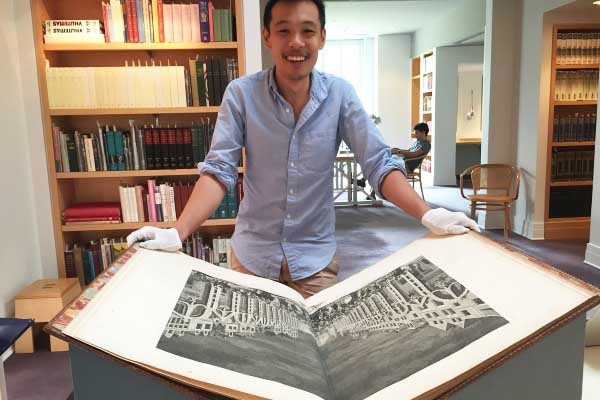Matthew Gin publishes work on ephemeral architecture built in France

“Staging Sovereignty: Ephemeral Architecture and the Entry of Maria Teresa Rafaela into France, 1745,” recently published in the Journal of the Society of Architectural Historians, examines the architectural dimensions of the remise, a courtly ceremony that marked the moment when a royal bride departed her homeland to be given into her new husband’s possession.
The article is by Assistant Professor of Architectural History Matthew Gin, who first became interested in 18th century France as an undergraduate student majoring in art history and Baroque flute at Oberlin College. He said he was “completely enamored with French music and culture” and fascinated by “the relationship between performance and space.”
But his expertise in ephemeral architecture is actually the result of a numerical error. As a graduate student at Harvard University, Gin went to the rare books library to request a book about French Baroque hedge mazes, but accidentally entered the wrong call number. When the librarian rolled out a cart with a gigantic book about a royal wedding in Paris, he felt obliged to look at it. Opening the massive cover, he discovered “an incredible series of images” of the temporary architecture built for the festivities, he said. “My mind was exploding in that moment, seeing all of that material. I was hooked.”
In “Staging Sovereignty,” Gin highlights how temporary structures, like bridges and an elaborate pavilion, played an important role in the remise, a two-and-a-half-hour ceremony on the Isle of Pheasants, situated in the midst of the Bidasoa River along the Spanish-French border.
“It (the ceremony) became an amazing demonstration of the architectural underpinnings of diplomacy,” said Gin. “A space where political power was unfolding.”
While Gin’s focus is on the 1700s, French ephemeral architecture is not just history, he said. As Paris prepares for the 2024 Summer Olympics, the city is once again becoming “a space of creativity and invention for a whole variety of artists and designers,” and visitors to the Olympic games will encounter a wide range of temporary monuments and venues.
Read the entire story on the College of Arts + Architecture website.